- Rosamund Community Garden
- Posts
- Rosamund Community Garden Update July 2025
Rosamund Community Garden Update July 2025
a wildlife garden for the community in Guildford, Longdown Road, GU4 8PP
Hello and welcome to July’s garden update.
📅UPCOMING EVENTS AT THE GARDEN
Saturday, 5th July, 2:00 pm - 3:30 pm - Family Gardening Session at Rosamund Community Garden with Jane » non-members please REGISTER HERE
Sunday, 13th July, 11:00 am - 2:00 pm - Cobbing the Hub (all welcome - email to let us know if you’re coming)
Thursday, 24th July - Camberley Nepalese group at the garden (closed group)
Saturday, 2nd August - Family Gardening with Jane REGISTER HERE
Thursday, 7th August - Camberley Nepalese group at the garden (closed group)
Thursday, 14th August - Surrey Choices (closed group)
Sunday 21st September 12:00 pm to 4:00 pm - Open Afternoon with Apple Pressing
🌱GARDEN NEWS
by Clare Millington
What’s happening in the garden?
As we experiment with different growing techniques, it’s fascinating to see what works and what doesn’t. This long period of hot, dry weather challenges the resilience of plants and animals, but it has confirmed that we’re going the right way, focusing on perennial planting and no-dig methods.
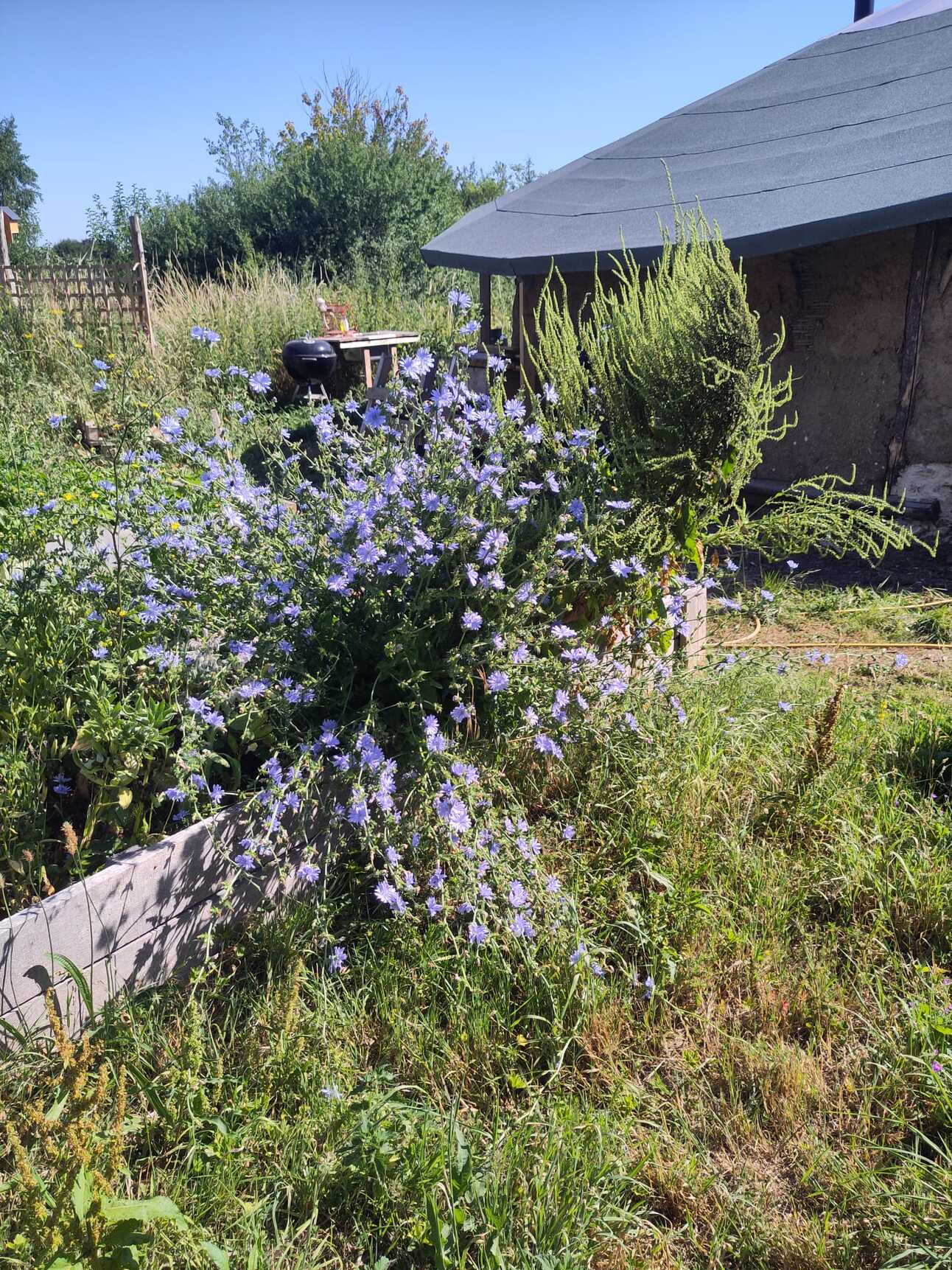
Wildlife
This year, the wildflowers are enjoying the dry spell, with much more diversity in the hedgerows and, consequently, noticeable rises in insects. Our swales of yellow rattle in the orchard are now setting seed from their namesake pods, and it’s knocked back the grasses and allowed new species to establish.
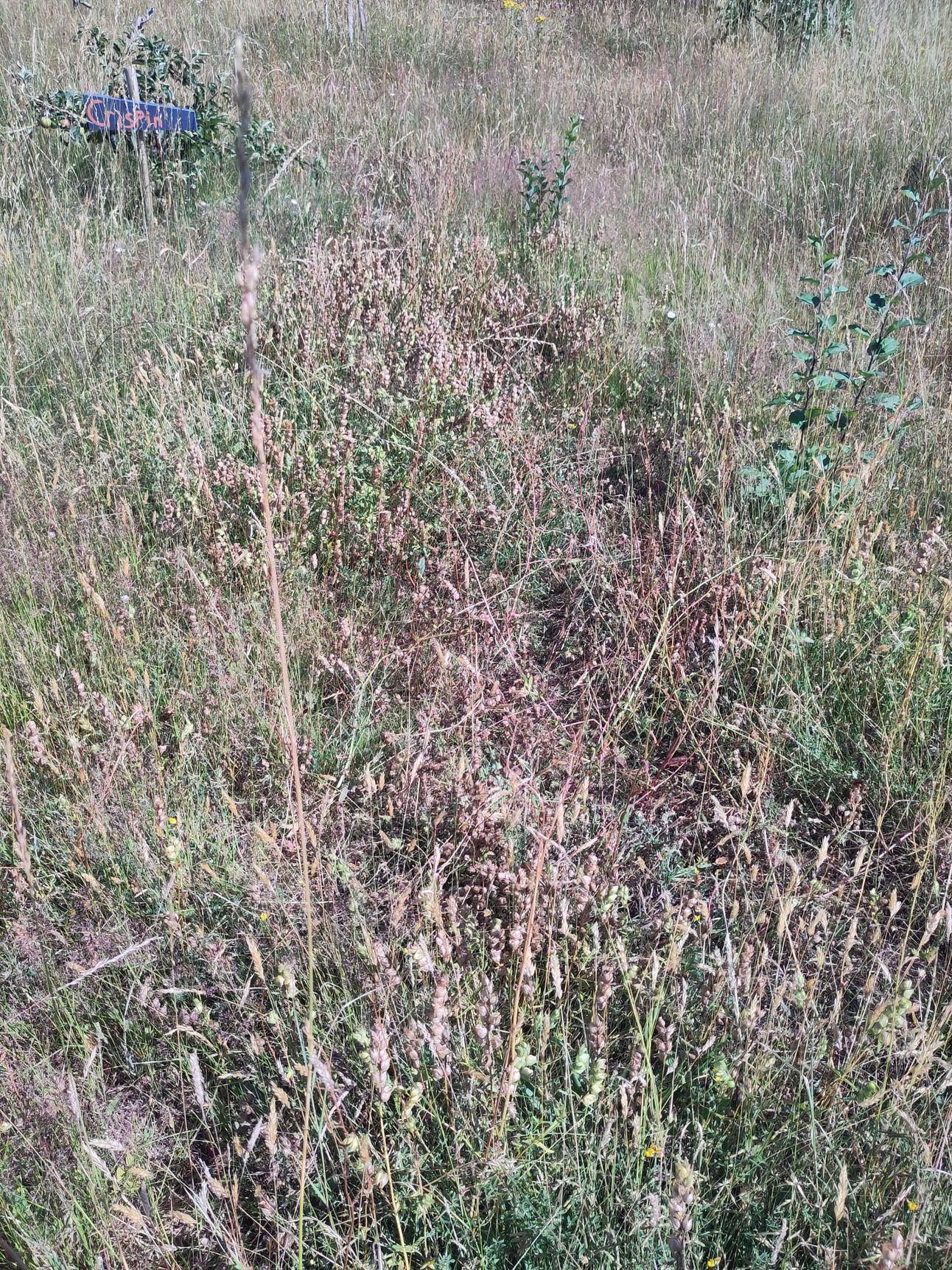
The teasels are coming into flower and their gorgeous spiky, mauve pom poms are a rich source of nectar for the pollinators. Their seeds will then provide food for the many finches that visit the garden.
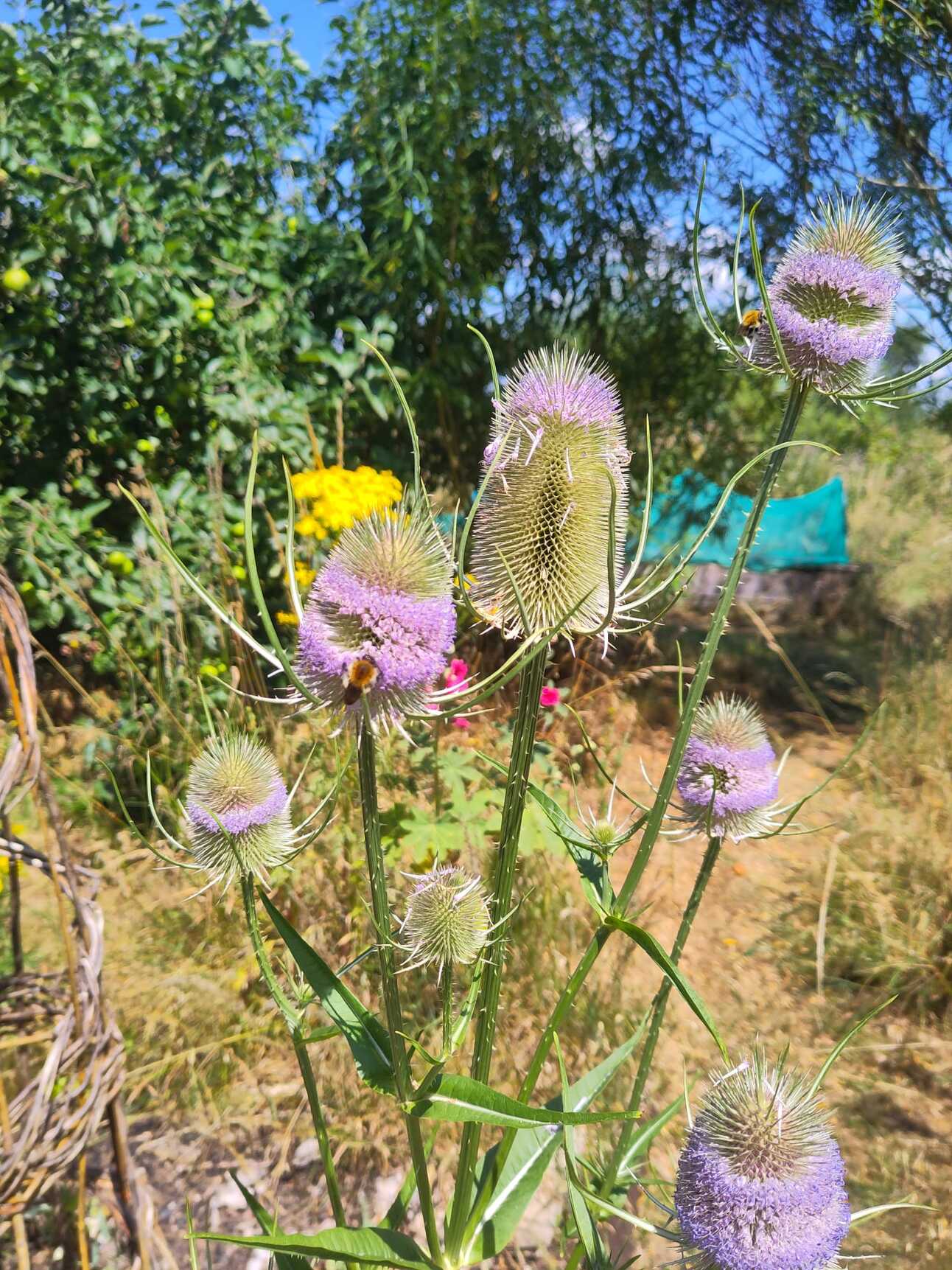
The other star is the much-maligned ragwort. Although ragwort is a poisonous plant, it is a really important plant for pollinators, producing lots of golden daisy flowers throughout the summer and is a major food source for the cinnabar moth caterpillar. Last year was a dreadful year for this species but we have a healthy population at the garden at the moment, who provide food for cuckoos, phormium ants and apparently moles, who eat the pupae stage.
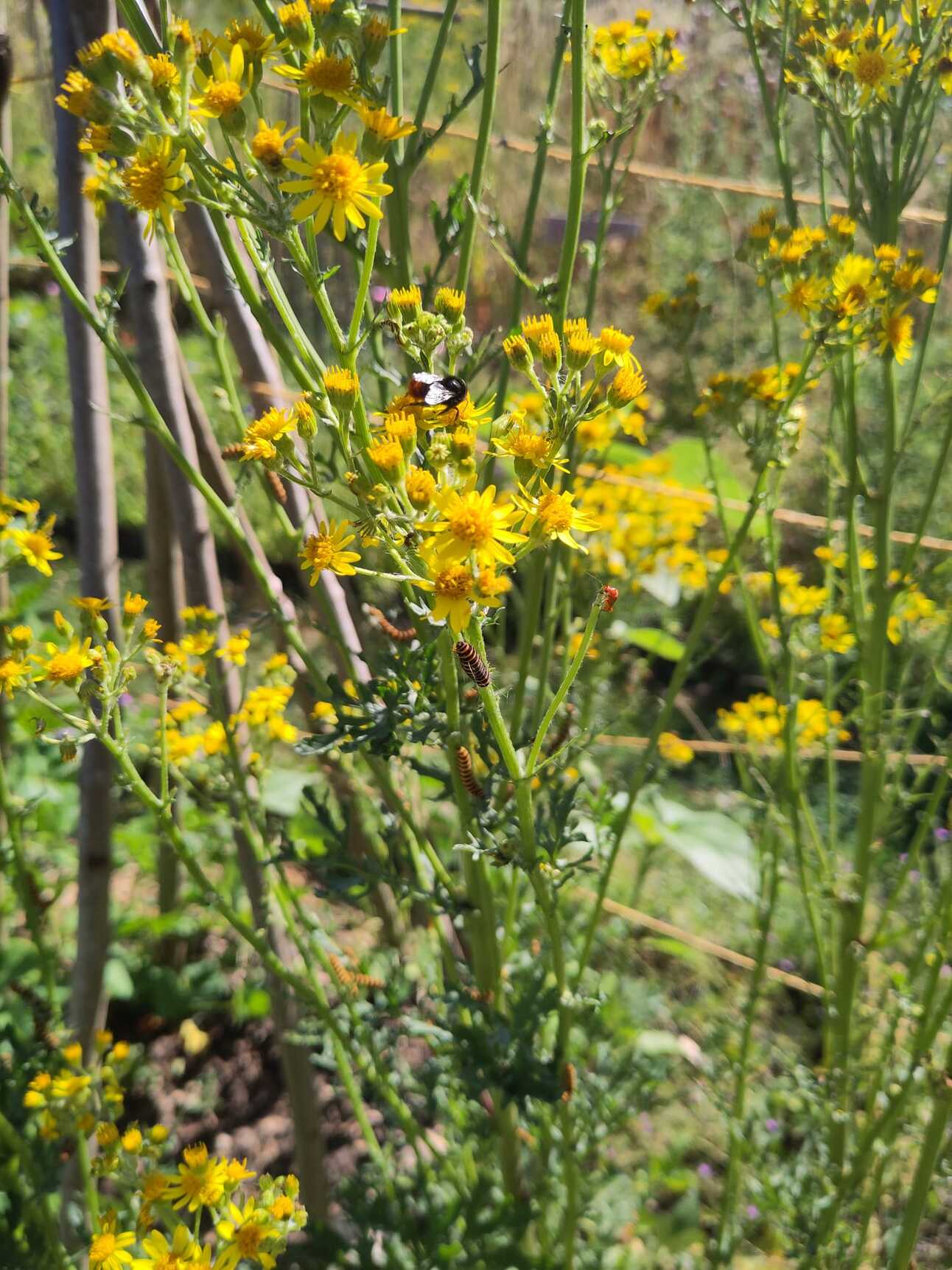
The nettles are setting seed and these nutrient-rich plants are another fantastic food source, with the female seeds providing vitamins, minerals and fatty acids that balance adrenals and boost your energy!
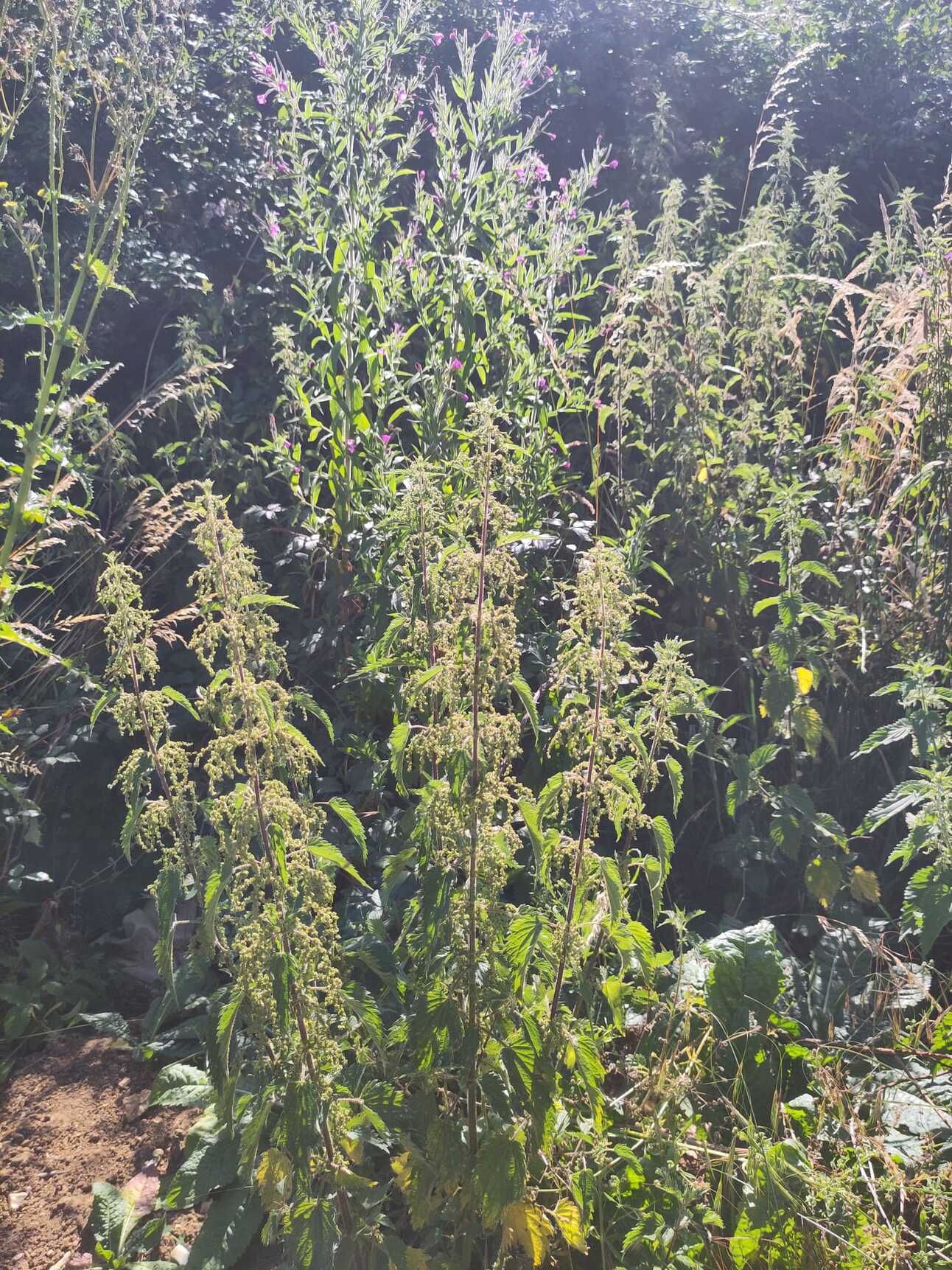
Forest Garden
In the forest garden, the soil under the woodchip mulch is still moist and full of fungal hyphae, and the new trees and plants are doing very well with minimal watering. Along with drought-tolerant herbs like sage, mint, comfrey, yarrow and hyssop, we’re trialling some perennial kales, broccolis and skirret - the perennial parsnip (also called sugar root)
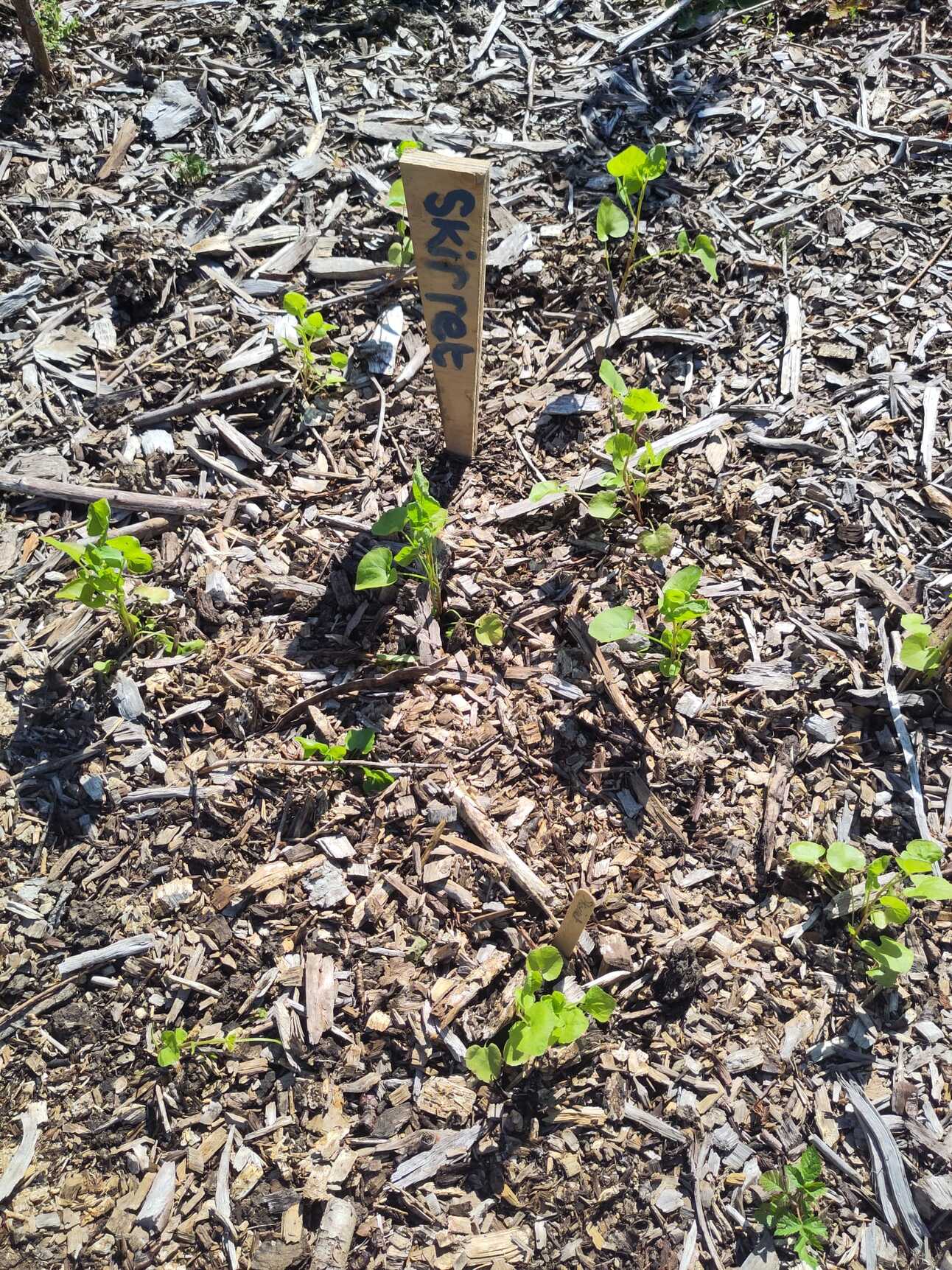
Until the forest garden is well established, we are popping in annuals, like squash and tomatoes, to fill the gaps, but it will be essentially for permanent multi-use plants.
Fruit Cage
We have had a bumper harvest crop of blackcurrants and loganberries with no watering at all! Just cut and drop weeding and careful pruning from Kate. We even have the promise of grapes this year and the autumn raspberries have started fruiting.
Outside, the plums are particularly prolific, and fingers crossed, with a bit of rain, we could have a good apple harvest too.
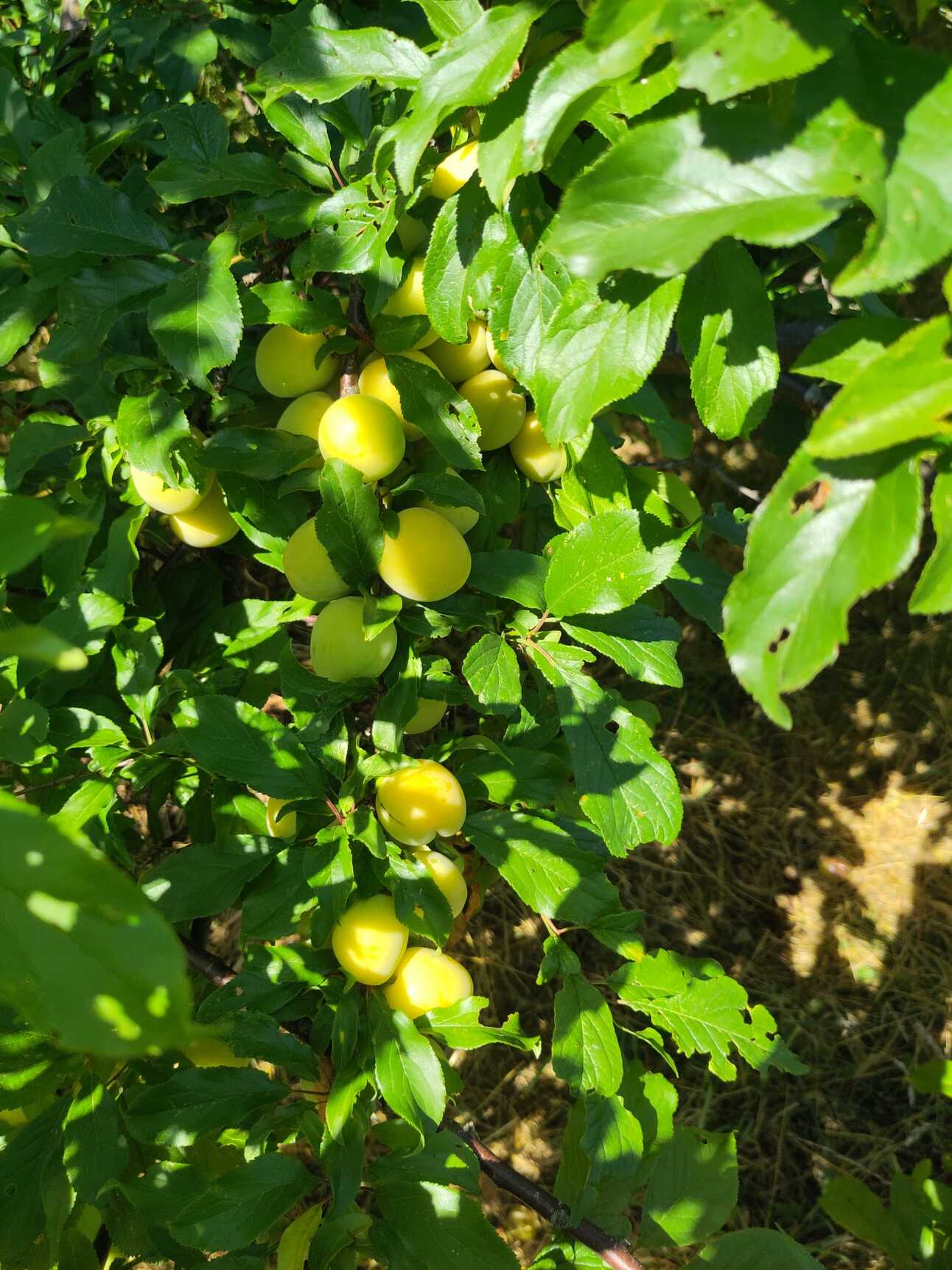
Poly-tunnels
Poly 2 has been planted with cucumbers and basil this year and they seem to be thriving so far. With some varieties, you can get cross-pollination from the male to female flowers, which turns the fruit very bitter and inedible. It’s easy to distinguish between the 2 sexes as the male has no fruit forming behind the flowers. It’s best to pick off the male flowers as they form to keep the cucumbers sweet.
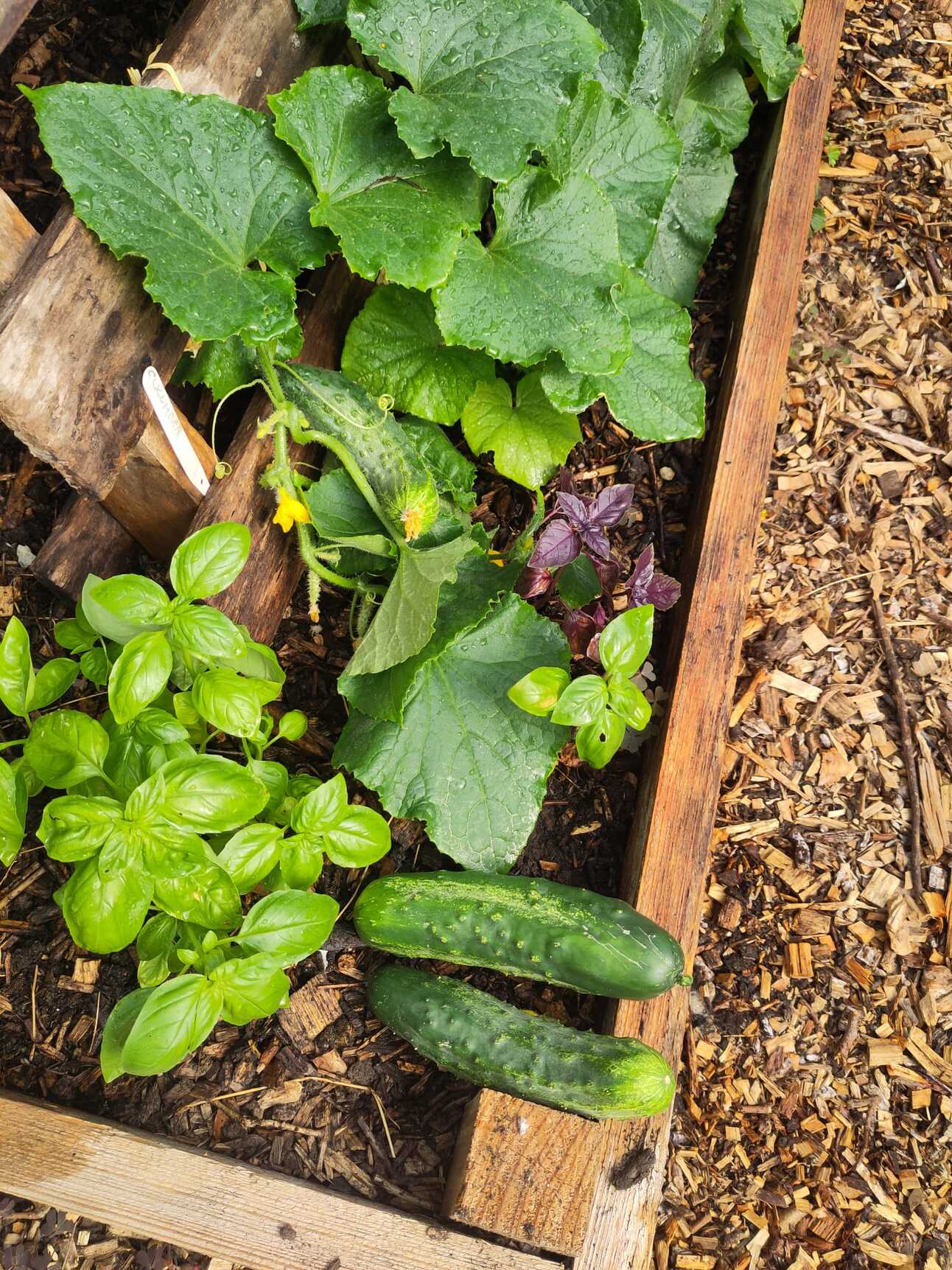
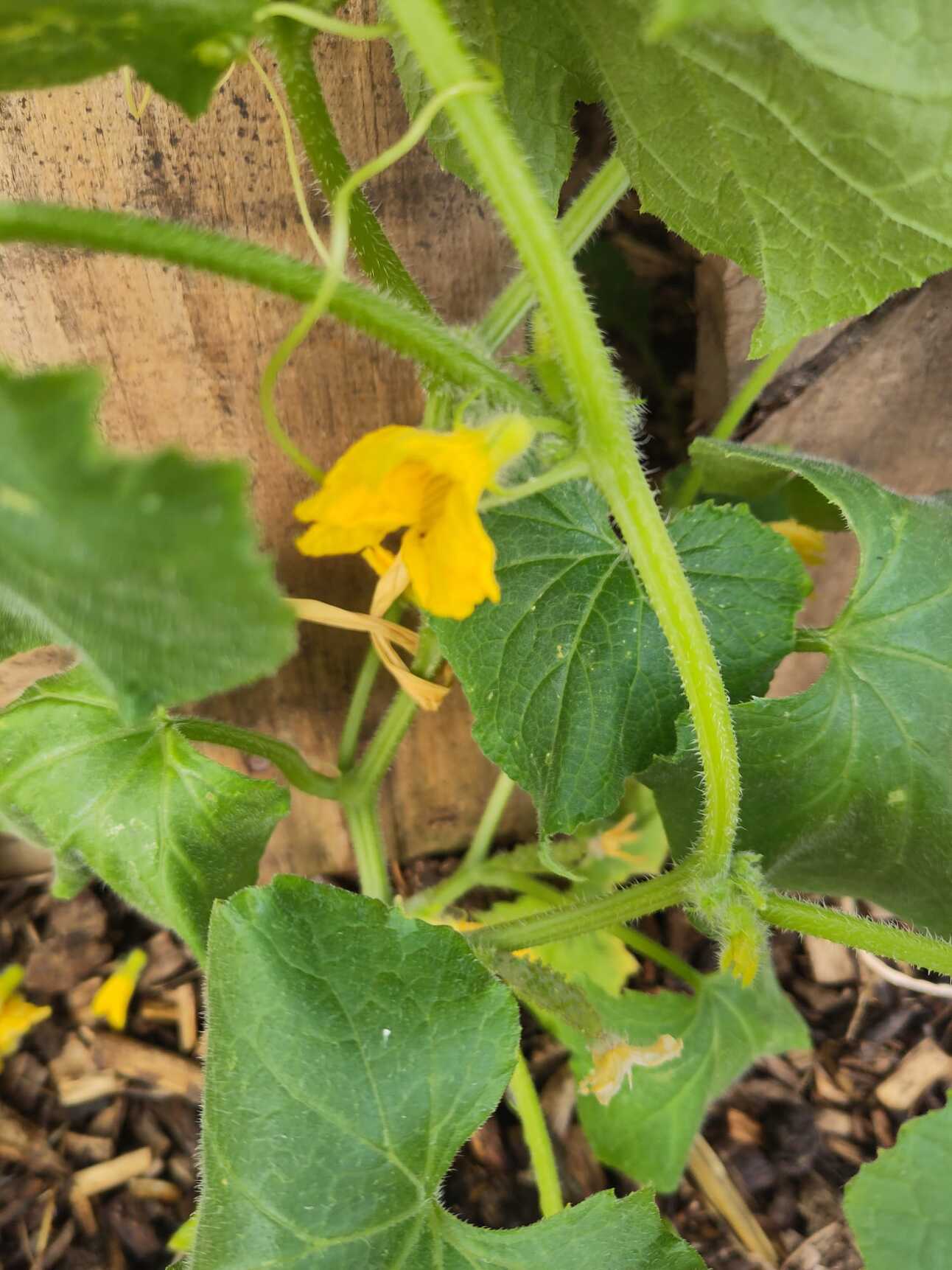
Poly 1 has been very disappointing and we won’t expect a good tomato crop this year, unfortunately. If we’re set for a good summer next year we’ll focus on outdoor bush cherry tomatoes, which are much more reliable, and low maintenance.
Hub
This spring has seen lots of groups coming to learn how to cob, and consequently, we have made amazing progress and hope to have the space draft-proof by winter.
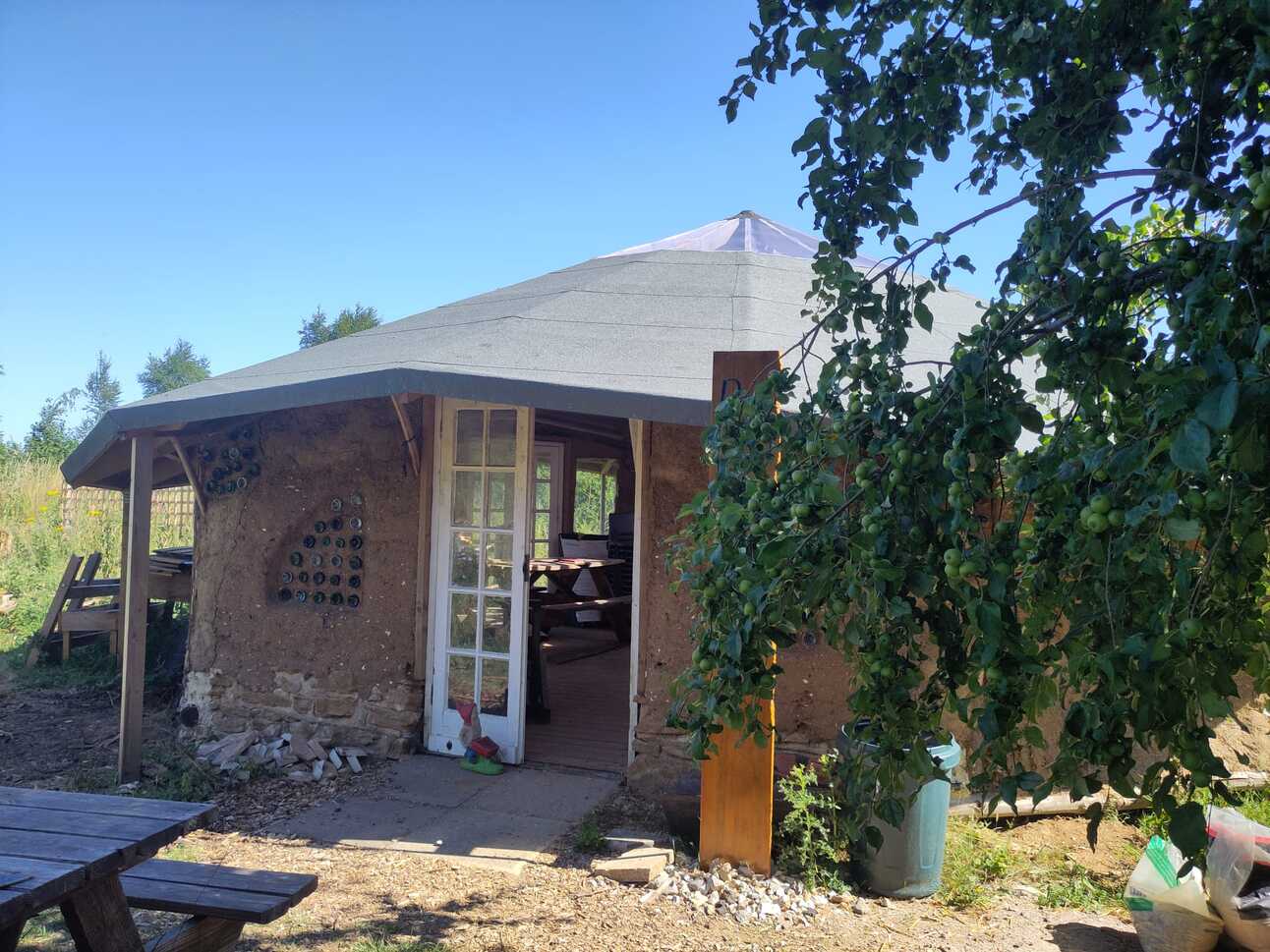
Clare and Helen visited Butser Ancient Farm recently and talked to the archaeologist there about what to use for rendering cob buildings like the hub. They are trialling lots of different mixes there, and anything goes (people would use what was in the soil locally), so we will do the same and have some fun trying different techniques.
We have Sunday, the 13th July, in the diary for anyone who can come and help with finishing touches.
Other exciting news is that Scott-Brownrigg architects have designed us an outdoor kitchen, which they have submitted to GBC planning for pre-app advice. Fingers crossed it will be approved and we can get a work party together to make it happen. This will be a rustic “camping” kitchen, where we can prepare food together and wash up. It’ll be made from recycled materials and will include a clay wood-fired oven for baking.
We are very pleased to welcome the Growth Team from Surrey Choices, who will come once a month to help with our projects at Rosamund. Surrey Choices is a SCC-funded project that supports neurodivergent and disabled people towards independence and employment.
The team enjoyed doing some wattle and daubing and got creative with the hibernaculum.
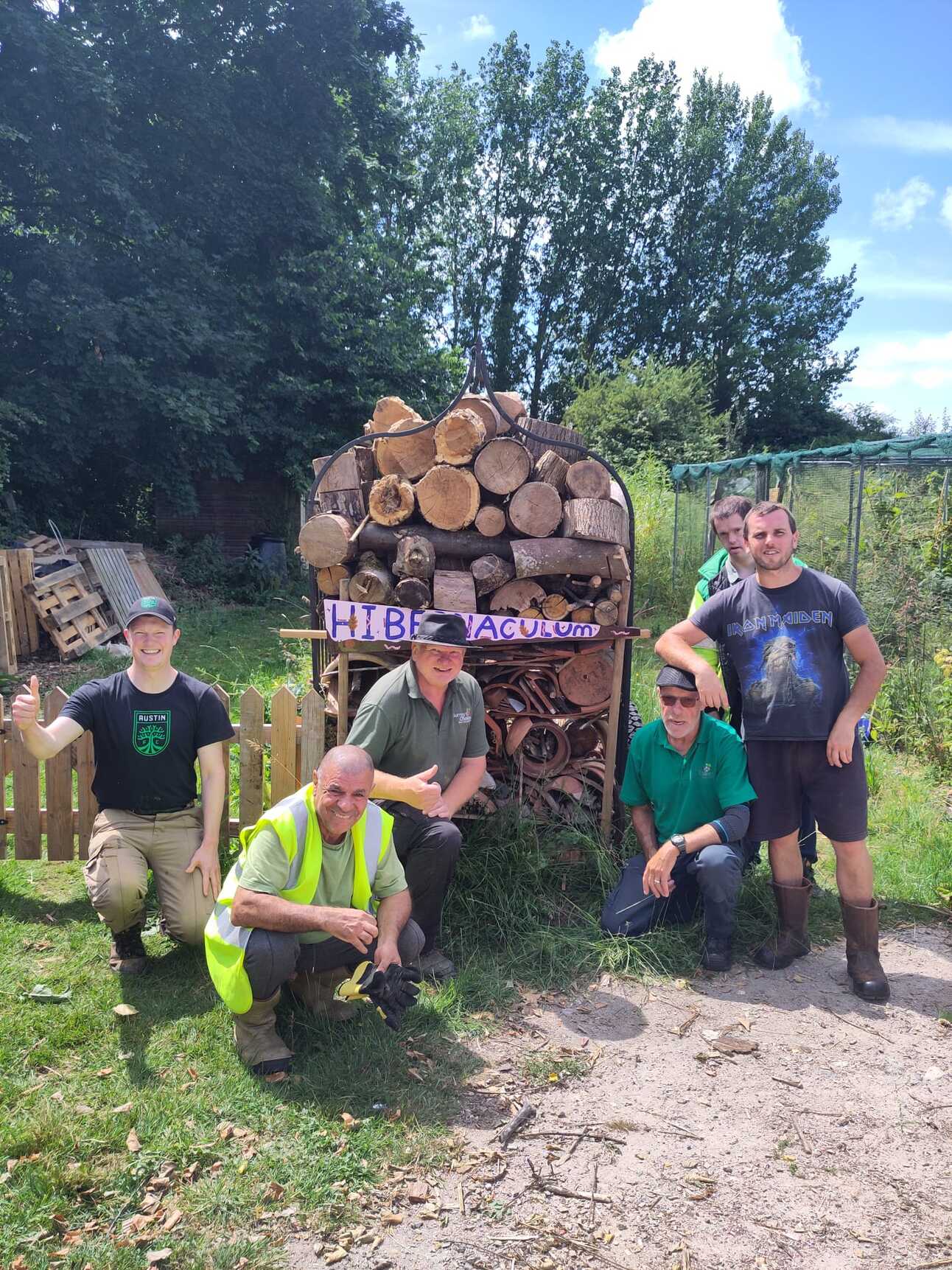
Family Gardening Sessions
Last month, the adults and children worked in the willow den area, preparing the ground for a mud kitchen.
The children are going to design the area and make a wishlist.
If anyone can help make a mud kitchen, perhaps out of old pallets, please let Jane know! (pics shared on our Facebook page here)
👩🏻🌾 JULY JOBS AT THE GARDEN
Harvest blackcurrants and berries
Water veg beds and poly-tunnels when needed (check soil first)
Cut back brambles and vegetation from paths
Water dye bed
🌻Wildflower Identification Course with Surrey Wildlife Trust at Nower Wood
Lisa, one of our community gardeners, recently took part in a Wildflower Identification course with the Surrey Wildlife Trust’s Adult Learning Programme at the stunning Nower Wood reserve.
The day began with a warm welcome and lecture, complete with hot drinks and snacks, before the group headed out mid-morning to a nearby meadow for a full day of exploration.
Equipped with ID guides and hand lenses, participants were able to identify over 23 different wildflower species in just one square metre—a great exploration of how important our chalk grassland habitats are. Lunch was enjoyed outdoors, picnic-style, in a bit of shade to avoid the heat.
Looking forward to doing a survey of our own grassland and seeing how many species can be identified there.

Ploughman’s Spikenard (used to be used by people after being in the field)
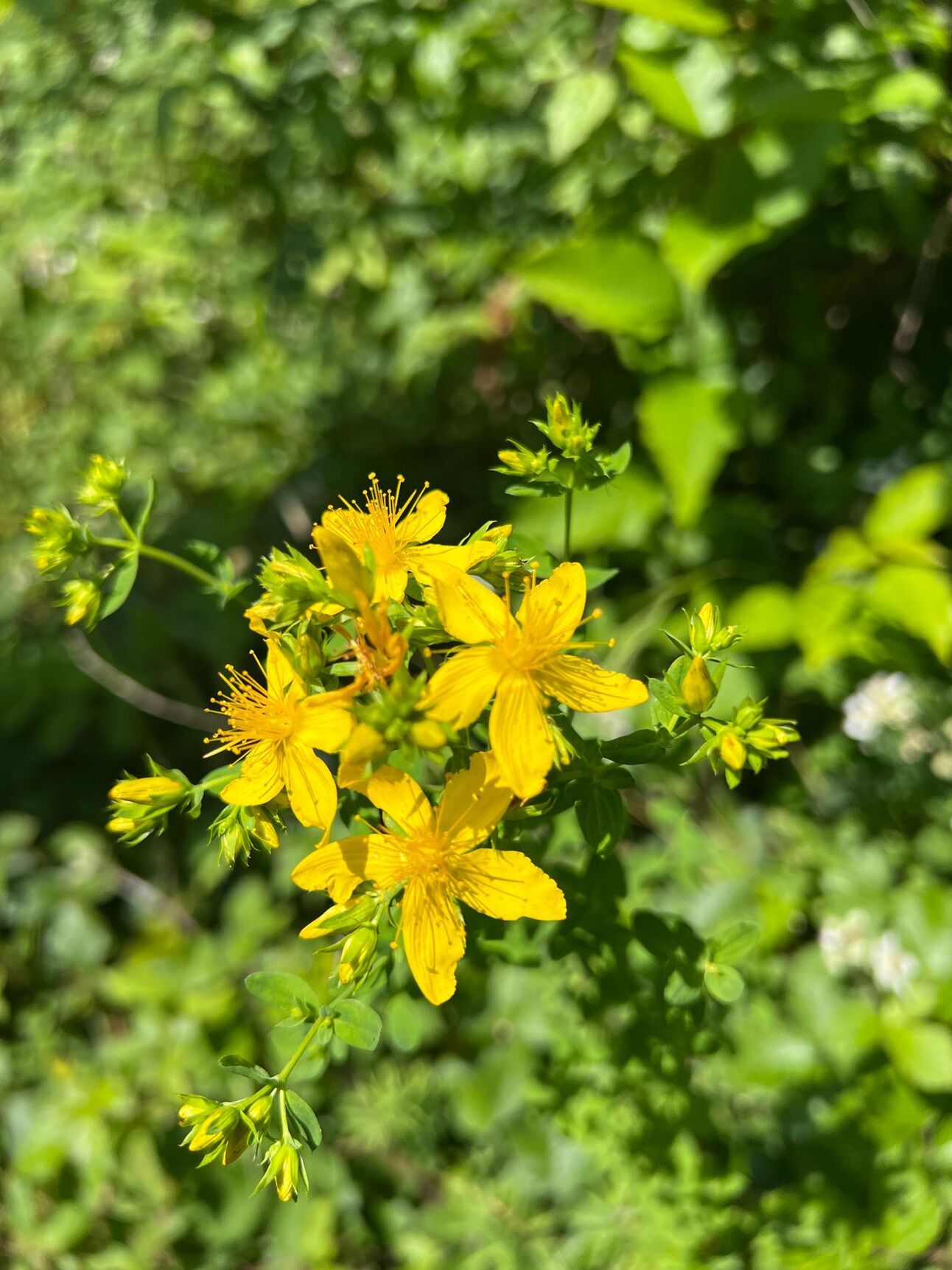
Perforate St johns wort (when you put these up to the light, you can see “holes” in the leaves, which are actually oil bladders)
The Rosamund Community Garden shares a membership system with Guildford Environmental Forum for joining info please email [email protected]
We look forward to seeing you in the garden soon!
Reply